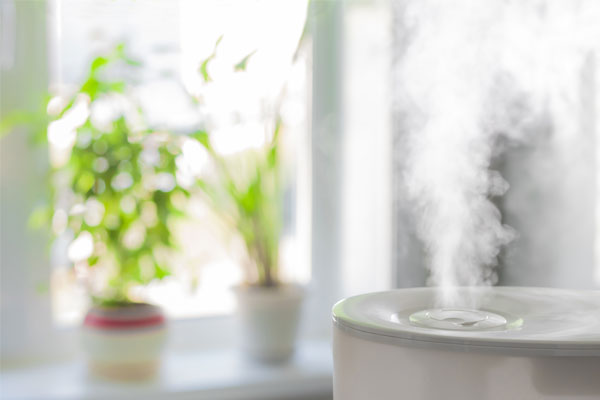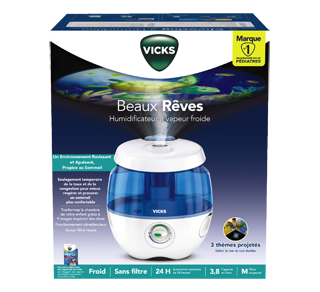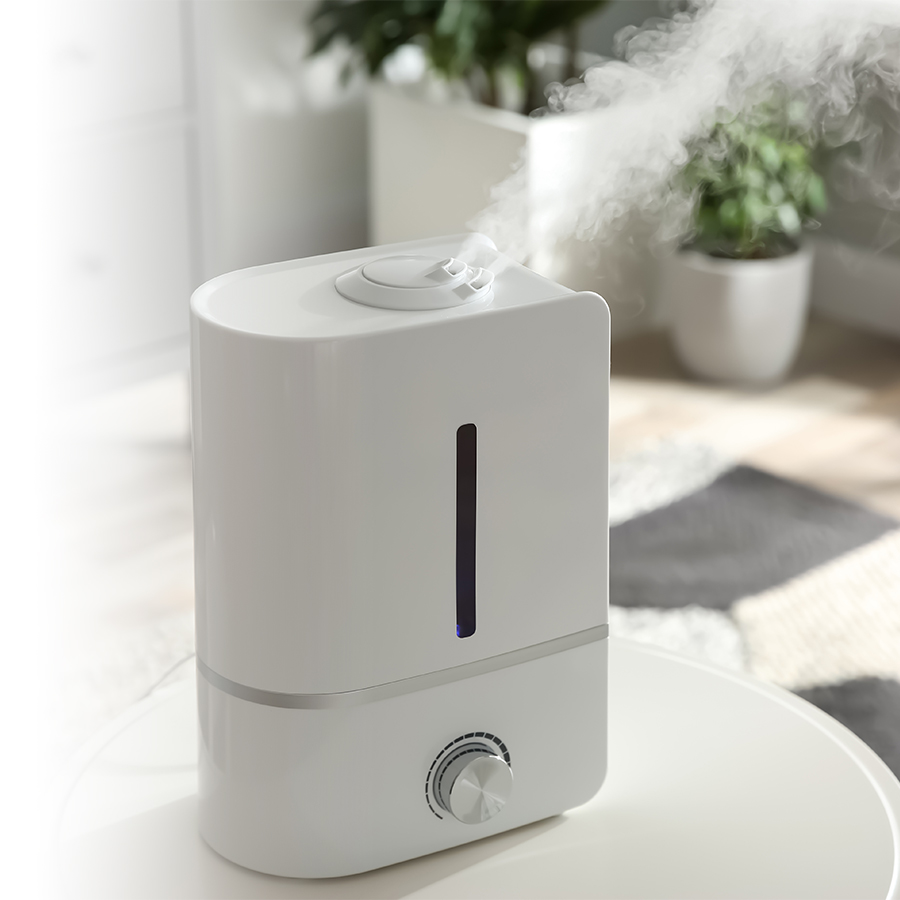Who hasn’t experienced the discomfort of dry air in winter? Fortunately, a humidifier can be used to avoid this problem.
Air moisture: comfort first!
In winter and summer alike, it’s nice to be able to enjoy the comforts of home. There are so many things that make our home a haven: the warmth of a fireplace, the people we love, soft background music and familiar sounds and smells. In Canada, we spend nearly 90% of our time indoors, so it is important that the air we breathe at home is healthy and comfortable.
Cigarette smoke, mould, certain household cleaning products and wood stoves are examples of things that can affect the quality of the air we breathe in our homes. While excessive moisture can compromise air quality, when the air is too dry, it can cause discomfort or exacerbate health problems.

Dry air and health
Due to the climate they live in, most Canadians have already experienced the discomfort that dry air can cause. Here are some examples of symptoms that can be attributed to dry air:
- dry irritated eyes, nose and throat
- nosebleeds
- nasal congestion
- dry skin
Moreover, dry air may contribute to worsening certain health issues such as colds, the flu, asthma, chronic obstructive pulmonary disease, sinusitis, allergies, and xerostomia (dry mouth).
Appropriate air quality and humidity levels help people breathe well and feel comfortable.
In addition, dry air can contribute to exacerbating certain health problems such as colds, the flu, asthma, chronic obstructive pulmonary disease, sinusitis, allergies and xerostomia (dry mouth).
Good air quality and appropriate humidity levels help people breathe well and feel comfortable.

Moisture levels in the air and humidifiers
Moisture improves air quality. It's a good idea to periodically measure moisture levels in your home. The device used to measure moisture in your home is called a hygrometer. Measure moisture levels in your home using this type of device and keep them between 30% and 50% in winter. If needed, you can use a humidifier when the air is too dry.
However, be sure to monitor moisture using a hygrometer. If moisture levels reach or exceed 50%, stop using the humidifier. If this occurs without a humidifier (during summer, for instance), the use of a dehumidifier may be considered. Air that is too moist promotes the proliferation of mould, bacteria and dust mites that can affect health, particularly for people living with asthma.
Whatever the season, a humidifier is a good way of dealing with dry air. There are three types of portable humidifiers, hot steam humidifiers (also called "vaporizers"), cool mist humidifiers and ultrasonic humidifiers. Your pharmacist can give you advice on the advantages and inconveniences of the different types and models available. This will enable you to make an informed choice.
When used according to the manufacturer’s instructions, humidifiers are considered to be beneficial and safe. However, if they are not cleaned and disinfected regularly, their use can lead to certain problems, particularly for people living with asthma, allergies and other respiratory problems.
Your loved ones deserve to breathe clean and appropriately moistened air. For many families, a humidifier can be a great option!



